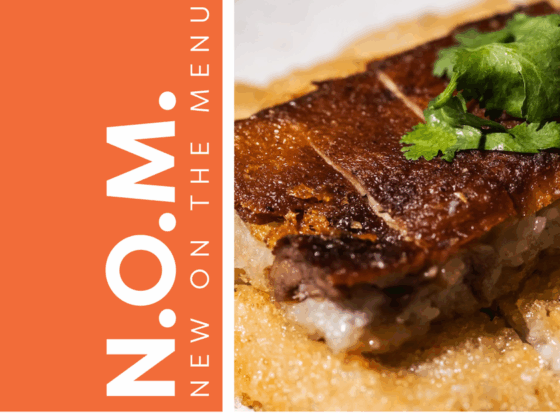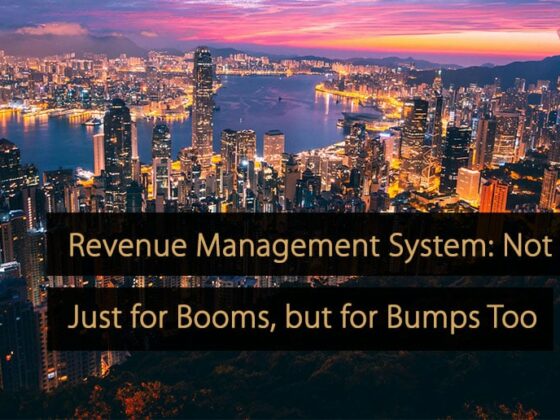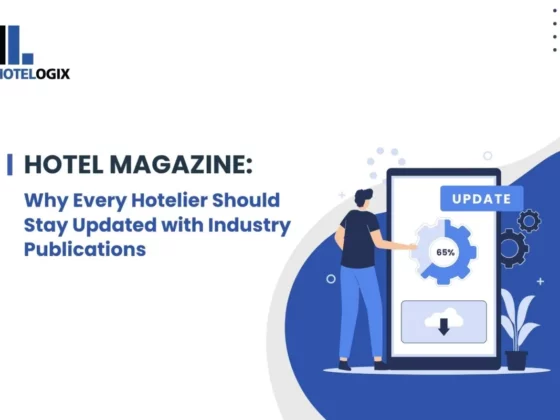
Hotel cart abandonment recovery isn’t just about recapturing lost revenue — it’s about creating moments of connection with your guests that ultimately bring them back to book direct with you.
Consider this scenario: A guest is booking a long weekend at your property on her phone when her Wi-Fi glitches — at the exact moment she reaches the payment screen. The page spins, she becomes distracted with something else that grabs her attention, and she moves on with her day.
But, 30 minutes later, she receives a helpful SMS letting her know her room is still available and an email featuring a single-click “Resume your booking” button. And shortly after, a reservation agent gives her a friendly call, offering to answer any questions and hold her preferred room.
By the end of the day, she’s not only booked a three-night stay but also added a spa package and airport pickup, totaling $600 in upsells.
While it sounds like an ideal scenario, this isn’t just wishful thinking. It’s the result of a smart, multi-channel cart abandonment recovery strategy — and in this in-depth guide, you’ll learn exactly how to design, launch, and optimize the very framework that turned that near-loss into incremental revenue at your own hotels.
Whether you’re looking to boost your revenue, improve conversions, or get your Direct Bookings Mastery Certification, this step-by-step playbook will help you turn abandoned carts into booked stays and “almost” guests into loyal ones.
What is cart abandonment in hotels?
Hotel cart abandonment occurs when a guest begins the process of booking a room on your website but leaves before completing their reservation. Think of it as the digital equivalent of someone walking out of your lobby mid-conversation — right before committing to a multi-night stay.
According to industry data, approximately 85% of online hotel bookings are abandoned. And mobile abandonment is even higher, as those travelers are known to comparison-shop on smaller screens and have shorter attention spans.
Unlike retail, where recovery strategies are well-established, those in hospitality have been slower to adopt multi-channel approaches tailored to the booking journey. But the key takeaway here is to keep this in mind: Think of abandoned bookings as low-hanging revenue opportunities. With the right strategy in place, you can recapture those opportunities and boost your bottom line. And taking a multi-channel approach is the best way to recover an abandoned cart in hospitality.
Why do hotel guests abandon bookings
While there’s no single reason guests abandon bookings, there are some common culprits. Here are a few of the top reasons guests don’t complete their reservations:
- Friction in the checkout process. This can range from slow loading times to having too many form fields. Your counter move: Send a SMS reminder with a link to a pre-populated checkout page to remove friction for the guest.
- Less-than-ideal booking experience. If your booking engine provides a less than ideal experience for guests (e.g., doesn’t match your main website, is missing a currency toggle, or shows tiny room photos), this can cause a lack of trust and result in abandoned bookings. Your counter move: Audit your booking engine for design consistency, speed, and visual clarity. Then, make any necessary adjustments and follow up with a remarketing email that highlights your updates.
- Unexpected costs at checkout. Hidden fees or even taxes revealed only in the final stage can cause shock and abandoned bookings. Your counter move: Send an email featuring transparent pricing to remove confusion and build trust. Follow up with a phone call clarifying the total cost.
- Lack of trust or clarity. Payment security concerns are top-of-mind for many guests. If there’s any security concern, that can cause fear that results in abandoned bookings. Your counter move: Have an agent follow up with a phone call to help clarify your security measures and offer secure payment options.
- OTA convenience. Between comparison shopping with OTAs and the habits of using them to complete bookings, it’s easy for guests to default to use OTAs. Your counter move: Follow up with a helpful email, featuring price parity and the loyalty benefits of booking direct.
- Mid-booking distractions. Between incoming calls, work messages, and general life happenings, it’s easy for guests to get distracted and forget to complete their reservations. Your counter move: Make sure to follow up with a multi-channel approach (email, SMS, and voice) within the first 24 hours to maximize conversion potential.
Why an email-only approach limits your results
Many hotels rely solely on cart abandonment emails to try and win guests back. Those efforts certainly matter, because guests who open recovery emails convert at far higher rates than the general list, but the ceiling is low. In fact, email-only strategies typically recover just 15-18% of abandoned bookings.
But hotels who choose to implement a multi-channel approach that combines email, SMS, and their voice channel often see recovery rates above 30% from their abandoned cart campaigns.
So, why does a multi-channel approach make all the difference? In short, it’s because each channel captures guests differently. Remember, channel preference differs by guest. Some may ignore inboxes but live in messaging apps, while others crave human assurance. Meanwhile, timing elements and psychology play roles as well.
Here’s how the different channels work best:
- Hotel email marketing works well for nurturing warm leads.
- SMS reaches distracted mobile bookers in real time.
- Voice calls help rebuild trust faster than other channels and answer complex questions quickly.
Now let’s bring all these components together by taking a walk through the five essential components of a hotel cart abandonment recovery strategy.
Your multi-channel abandoned cart recovery playbook
Here are the five pillars that, when combined into one cohesive strategy, will form a full-circle cart abandonment recovery system. Each pillar includes guidelines, tips, and practical examples you can begin using today.
1. Implement effective abandonment triggers across devices
When creating your multi-channel abandoned cart recovery strategy, the best place to start is to begin tracking where abandonment happens and then setting up triggers that respond accordingly. The goal is to detect booking abandonment in real time and capture a guest’s contact data before they abandon their cart.
Here’s what this looks like based on the user:
- Desktop users: Use “exit intent” scripts to capture when the guest’s mouse moves toward the top of the screen. This can trigger a subtle slide-in or inline prompt offering a small perk (such as free breakfast) in exchange for their email address.
- Mobile users: Trigger recovery flows after 15 to 30 seconds of inactivity that offer an option to the guest to save their quote. In exchange, they simply tap the button that collects their phone number via autofill, so that you have their contact information.
- Both: Implement an inline prompt to capture a guest’s email or phone number before checkout — ideally at the room selection stage. While you want to collect both an email and phone number, remember that you only need one communication path to launch the multi-channel recovery strategy. Try to avoid pop-ups whenever possible, as users can find them irritating. As a result, they can have the opposite effect and cause more abandoned bookings — the very thing you’re trying to prevent.
Remember, this is your safety net. Without a guest’s contact info, you can’t remarket to them and recover what’s been lost.
2. Create reservation agent call scripts for high-value abandonment recovery
When a potential abandoned booking is large or tied to a loyalty account, providing a personal follow-up from your hospitality call center or reservations team can make all the difference. Following a script that focuses on empathy can help you to recover the booking. When creating your script framework, focus on what we’ll call the three C’s of empathy: care (acknowledge), connect (offer assistance), and communicate (provide value).
Here’s how this would look:
-
Care:
Hi, [Name]; I saw you were exploring our Oceanview Family Suite for the week of July 10. I know booking online can sometimes be overwhelming or confusing.
-
Connect:
I’d love to answer any questions or walk through the options together.
-
Communicate:
I can offer a free breakfast for the kids and extend the rate you selected for another 24 hours in case you’re still deciding.
3. Develop compliant SMS recovery templates
SMS can be an incredibly effective tool in your cart recovery playbook when used for the right guest at the right time, but keep in mind that it must be used with care. It’s important to remember to comply with TCPA regulations if you’re in the U.S., CASL in Canada, and GDPR in the EU, which require that every promotional SMS must include clear opt-out language.
To get the most out of your SMS recovery plans, keep your messages to 160 characters or less to avoid message splitting and send the first message about 30 minutes after the abandoned booking takes place. Make sure to identify your property and include simple opt-out copy: Text STOP to unsubscribe.
Here are some sample templates to get you started:
- Standard reminder (send 30 minutes after abandoned booking): Coastal Breeze Resort: Jordan, we saved your Oceanview Deluxe King for 7/18–7/21. Finish in 2 taps: xyzhotel.link/book • Text STOP to opt out
- Urgency nudge (send 24 hours after abandoned booking): 24-hour hold ends soon, Jordan. Secure your oceanview rate now: xyzhotel.link/hold • STOP=opt out
- Personal touch for loyalty guest (send 20 minutes after abandoned booking): Hi Jordan, it’s Maria — same room you loved last year is waiting. Need help? Reply YES and I’ll call.
Segment your templates by cart value, stay dates, or membership status. This keeps your messages relevant and personal, which will boost your conversion rates.
4. Feature dynamic content & timeliness in email communications
When sending cart abandonment emails to your guests, remember that the key to success is to keep them personal and helpful, not generic. To get the best conversions from your cart abandonment campaigns, make sure to use dynamic content (content tailored to the guest) in order to provide a personalized experience. A subject line like, Still interested in your Deluxe King Suite?
will appeal to the guest eyeing that particular room.
You’ll also want to test your email subject lines over a period of 1 to 72 hours to help optimize your open rates and boost re-engagement. Here are some examples:
-
1 hour after abandonment:
We saved your room!
-
24 hours later:
Still thinking it over?
-
72 hours later:
Need more time? We’re here to help.
Finally, remember to utilize links that skip straight to the payment step with cart data pre-filled to improve your conversion rates. Additionally, utilizing plain-text ensures deliverability in all inboxes. The last thing you want is to lose your guest all over again at the finish line.
5. Optimize with testing frameworks
Once your framework is live, it’s important to shift from focusing on your launch to prioritizing continuous improvement. After all, the most successful hotel abandoned cart recovery strategies aren’t static. That means you should be testing and refining regularly — starting with your core KPIs:
- Open rate: Measures the effectiveness of your subject line and send time. Aim for an open rate of 40% or higher.
- Click-to-recover rate: Shows how well your message drives actual bookings (not just clicks). Aim for at least 10% of clicks to result in bookings.
- Call-to-booking rate: Evaluates your voice channel’s impact on high-value conversions. Your voice channel is your highest-converting channel, and data shows that you can expect a 50% conversion rate here.
Keep an eye on both winning and losing variants, and archive the ones that aren’t working right now. Guest behavior and travel trends shift seasonally — meaning you never know when you may need to revisit and repurpose older content.
Putting your cart abandonment recovery playbook to use
While booking abandonment can be frustrating for all hoteliers, it is a fixable part of the booking journey. But as you’ve seen in this guide, recovery is about more than just sending an email reminder and hoping it’s enough for the guest to complete their booking. Instead, it’s really about building a thoughtful, strategic, multi-channel system that reconnects with potential guests at exactly the right moment and in just the right way.
By taking a multi-channel approach that layers email, SMS, and voice outreach, you’ll not increase your chances of recovering lost bookings but also create meaningful moments that build trust, reinforce your brand messaging, and drive revenue.
So, now it’s your turn. Use the strategies outlined in this guide to determine where your current approach is falling short and what changes you can implement to make a big impact on your bottom line. With this framework in place, you’ll be reducing your booking abandonment, driving more direct bookings, and delivering the kind of guest experiences that naturally increase your revenue.
And if you’re working toward your Direct Bookings Mastery Certification, keep this guide close by. You’re one step closer to becoming a certified expert in hotel cart abandonment recovery!








